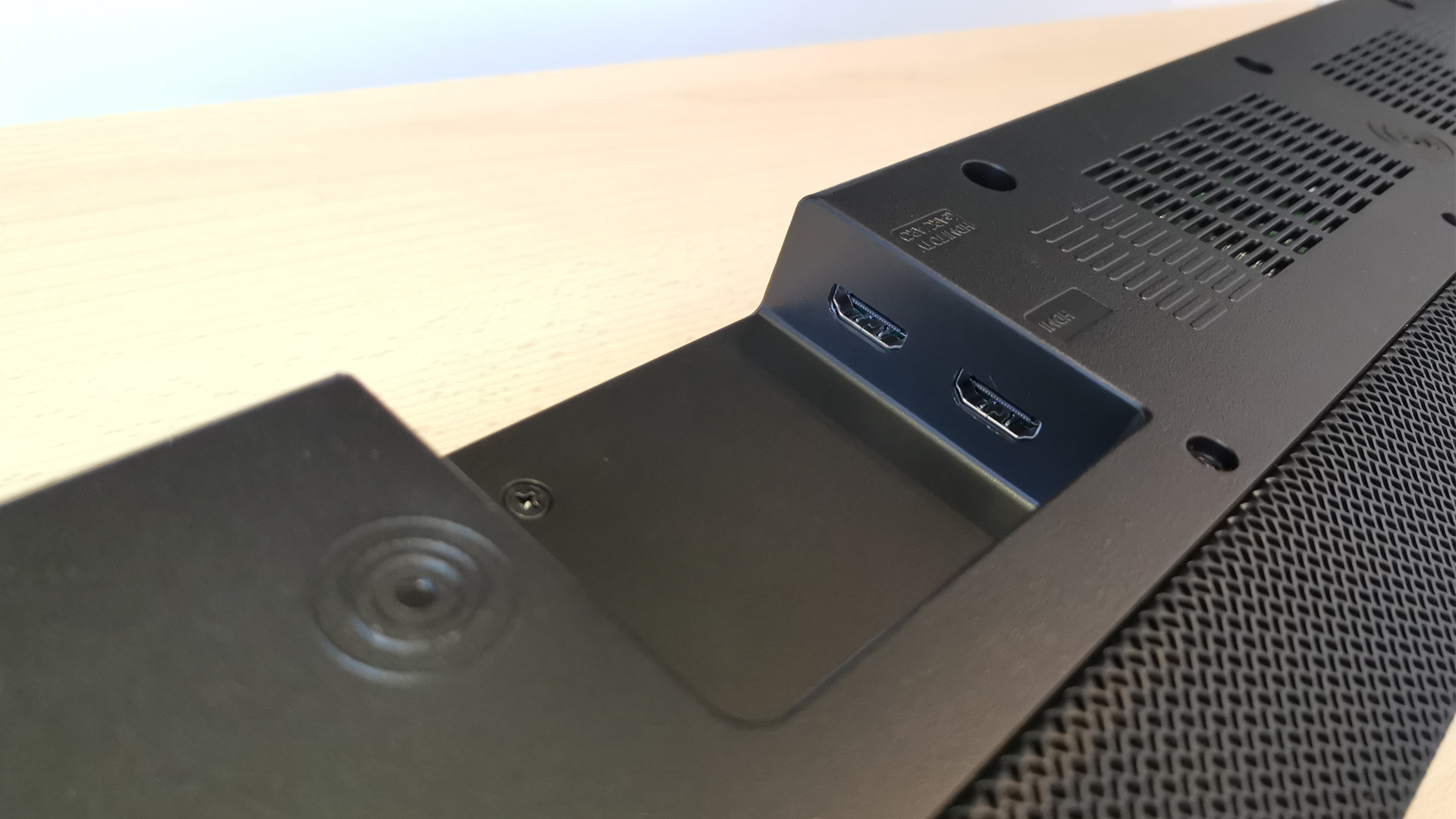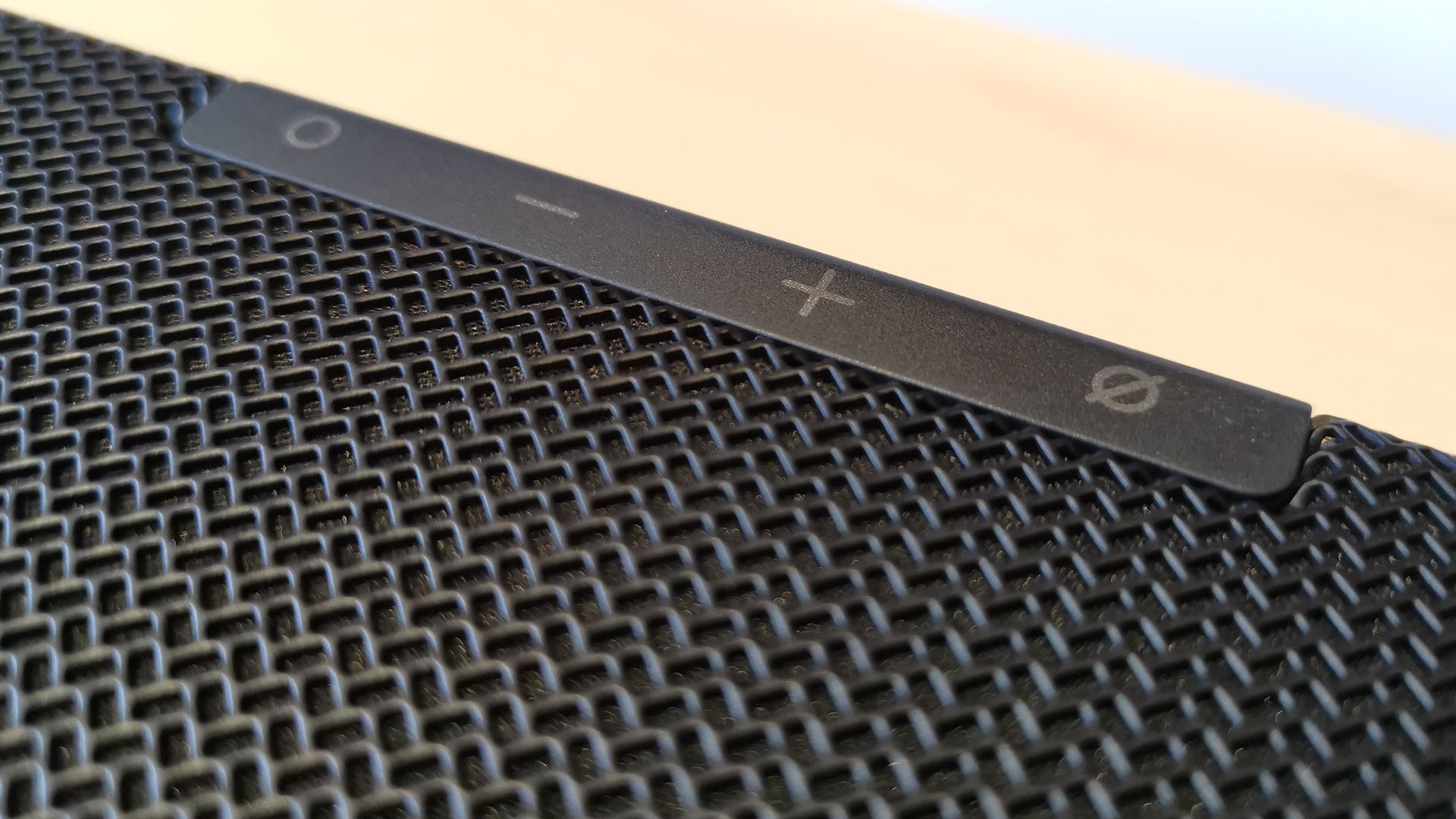Samsung HW-Q800A review: a top-tier soundbar for less cash
Samsung's HW-Q800A is a great Dolby Atmos soundbar that's now last-gen and therefore great value



The HW-Q800A is the kind of Dolby Atmos soundbar that puts a smile on your face. It’s a genuine crowd pleaser no matter what TV you have, though with the right Samsung TV you get even better performance. As a previous generation of this series it's now more affordable too, offering super value.
-
+
Crisp, agile movie audio
-
+
Seamlessly integrated bass
-
+
Good set of features overall
-
-
No Chromecast or Google Assistant
-
-
Only one HDMI input
Why you can trust T3
In this Samsung HW-Q800A review, we're going to look at how Samsung has built this Dolby Atmos soundbar into what was the T3 Awards 2021 winner of our Best Soundbar award. In short: it's really good. However, as the soundbar has now been replaced with the Q800B offering, it's now even better value, making for a further tempting prospect.
Thanks to the Q800B's inclusion of 3D audio (including DTS: X) and a wireless subwoofer, this is perfect for those looking to upgrade their TV audio to something that sounds cinematic without incurring the complexity of an AV receiver and separate speakers.
Like many of the best soundbars, the Samsung HW-Q800A uses a combination of clever speaker arrays, digital processing and reflection trickery to create something as close to surround sound as possible, from a fairly compact box that fits under your TV.
It's made to work excellently with any TV, though it has some extra special sauce when paired with certain Samsung TVs that are compatible with the Q Symphony – combined with its overall quality, it's still among the best soundbar for Samsung TVs you can buy. Here's why:
Samsung HW-Q800A review: Price & release date
The Samsung HW-Q800T launched in spring 2021, at a launch price of £799 in the UK and $799 in the US. In Australia, the nearest equivalent soundbar in Samsung’s line-up is the HW-Q700A, which lacks Alexa support, and is priced at AUD$950.
The cost of soundbars has been coming down recently, and this price is where things just start to get premium, though is still mid-range in the overall scheme of things. It compares well to the likes of the Sonos Arc, which is likely to be the closest alternative you might consider.

Samsung HW-Q800A review: Features & what's new
At first glance, this model looks very much like 2020's (also excellent) Samsung HW-Q800T. It’s a 3.1.2 channel design in classic black, but there are some welcome new features in this model.
Get all the latest news, reviews, deals and buying guides on gorgeous tech, home and active products from the T3 experts
One key point of difference between this model and last is the inclusion of Samsung’s Active Voice Amplifier. A lifestyle embellishment, it basically analyses the incoming audio system, to extract and amplify the dialogue channel. Selectable via the remote wand, it’s a rather clever feature for noisy households.
Also unique to Samsung is Q Symphony. This is a treat reserved for owners of select Samsung QLEDs. This patented system enables the soundbar to function in tandem with the speaker compliment in the TV itself. It’s a brilliant idea. Combined, TV and soundbar deliver a veritable wall of sound that doesn’t just leer with mean intent, but employs artful sonic steering. The result is improved acoustic immersion overall.
Coupled to a QLED TV with top-firing speakers, Q Symphony directs surround sound left and right channels through the TV heights, leaving left, centre and right duties to the soundbar array. On QLED TVs without top firing speakers, the combo use the TV speakers to create a virtual height effect.
I'll be judging the soundbar's audio on its own merit for this review, separate from the Q Symphony potential, but this is a truly impressive extra boost for those who go all-in on Samsung.
The subwoofer is wireless, so it can be placed flexibly – near your TV, or hidden slightly out of the way.
The HW-Q800A has Amazon Alexa on board, complete with far-field microphone, which means it’ll function as a genuine Alexa smart speaker in its own right. You can also stream music (or anything else) to it easily over Bluetooth or Wi-Fi, including support for Apple AirPlay 2.
It has an HDMI connection to connect to your TV, but also an HDMI input, for 4K HDMI passthrough.

Samsung HW-Q800A review: Audio performance
At 980mm wide, the HW-Q800A's size is an ideal partner for the best 48, 49 and 50-inch TVs, the best 55-inch TVs or the best 65-inch TVs. Lugs allow it to be wall-mounted, if required.
Behind the grille are two woofers and five tweeters, plus Samsung’s Acoustic Beam array technology, which is actually a line of 56 tiny holes used to project height audio.
Driving this complement is considerable muscle. Total power output is quoted at 330W, split between 2x 60W left and right, with the centre and that acoustic beam array getting 2x 20W. The sub claims 160W.
While it’s always wise to take such numbers with a pinch of marketing salt, there’s no doubt that this system plays loud and has considerable dynamic attack. It’s light and agile too, keeping pace with fast moving movie content.
The combo’s bass performance is outstanding. There’s a synergy between the bar and subwoofer that’s joyous at volume. The two crossover perfectly, creating one unified soundstage. Action movies are hugely exciting.
But while the sub is prodigious, the star of the show might well be Samsung’s wideband tweeters. They’re outstanding little performers, capable of ultra fine detail, but never overly sharp or sibilant.
Steerage around the front soundstage, and even up high in the gods, is energetic. Of course, what the HW-Q800A doesn’t offer is genuine surround sound. Like all soundbars of this ilk, it’s very much a stage performer. The action takes place front-of-house rather than to the side or rear – but it fills the front of house.
Recognising this, the HW-Q800T can be used with optional rear speakers to create a full physical surround system, which this year have been upgraded for Dolby Atmos. The new Samsung SWA-9500S rear speakers come with built-in upfirers – so you get a 2-inch forward facing driver and a matching 2-inch upward firing cone in each unit – which turns the entire system into a 5.1.4 Dolby Atmos configuration, if you add them. However, these rears were not supplied, so this aspect of the soundbar experience remains untested.
There’s no significant difference in the soundbar's performance between Dolby Atmos and DTS:X. In comparison, regular Dolby 5.1 mixes lack the same spatial detail, but there’s still width and imaging to admire.
As a Bluetooth audio system, the HW-Q800A is perfectly fine. The soundstage is a more confined with two-channel content compared to Atmos and DTS:X, but there’s enough pizzazz in the presentation to keep your toes tapping.

Samsung HW-Q800A review: Design & usability
While soundbar and sub are solidly built, they won’t win prizes for design flair. The ’bar features a hard wraparound grille and plastic endstops. The sub, a rear-ported design with a side-firing 8-inch driver, is relatively large and hefty (9.8kg) MDF.
Interaction is via a LED text display to the right. This relates volume, input and signal format information. It’s bright but quickly dims after a few seconds. There are some physical buttons centred up top, including power and volume control, but they probably won’t get much use.
A simple, ergonomically shaped plastic remote control is included. Samsung’s Smart Things app also lets you tweak bass and toggle voice enhancement. The latter should not be engaged, as it sounds horrible. There’s also a Night Mode, which constrains dynamics, so explosions don't wake people up.
Connectivity comprises just two HDMI (with eARC to connect to the TV) plus an optical digital audio input. There's no Ethernet port.
The HDMI passthrough is 4K, of course, and HDR compatibility covers Dolby Vision, HDR10+, HDR and HLG. There’s no USB media playback option.
The HW-Q800A is essentially plug and play. Powered up, the soundbar will automatically pair with the subwoofer. If connecting over HDMI, this means the whole thing takes a just a few seconds to get up and running for TV audio, excluding unboxing and setting up the Wi-Fi.
There’s no standalone soundbar calibration offered, although the HW-Q800A does offer SpaceFit, which works with compatible Samsung TVs – specifically the Samsung Q70T and up, to optimise performance for a given space.

Samsung HW-Q800A: Verdict
The HW-Q800A is a highly entertaining 3D audio soundbar, that in its core 3.1.2 configuration provides a towering soundstage that benefits action movies and sports. It can't produce a genuine sense of surround immersion, but you can invest in the optional rears to add that later.
It is a bit Samsung-centric in a couple of its features. The brand’s expansive Q Symphony technology is a brilliant idea, but only works for owners of certain Samsung TVs. The same applies to SpaceFit. If your display doesn’t comply, then what’s left is perhaps looking just a tad expensive.
However, in terms of raw performance, we have almost no qualms. Dialogue handling is excellent, the soundbar thrills with action movies, yet is capable of subtle sonic nuance, and the sub has popper wallop. And with its dropped price point it's now better value than ever and well worth considering.
Also consider
The Sonos Arc is the direct competitor here – it costs the same, and is fairly close in terms of features. It's also a Dolby Atmos bar, and also includes Wi-Fi and music streaming. It's a bit wider – only really for 55-inch TVs and up – and doesn't include a subwoofer. Adding the Sonos Sub effectively doubles the price, too. The Sonos Arc is probably a little better for sound quality when it comes to refinement (partly thanks to Sonos' TruePlay tuning, available to iPhone users), but lacks the rich impact of the sub. It also only has a single HDMI port, with no passthrough, which will mean it can be quite limiting in terms of connectivity depending on your TV. Here's our full Sonos Arc review, and we have a specific guide to compare the Samsung HW-Q800A vs Sonos Arc.
If you want something like the HW-Q800A but cheaper, look to the Sony HT-G700. It's more compact still (suitable for 43 inches and up), and also includes Dolby Atmos and DTS:X support. It aims to create effectively the same kind of soundstage as the Samsung, but uses fewer speakers, and even more acoustic trickery. And it's actually incredibly effective, especially for the price, as our full Sony HT-G700 review explains. It also includes a 4K HDMI passthrough, so you don't miss out on that key feature either.
If you're wondering how we test our soundbars here at T3 – or indeed any gadgets, and believe us, we do cover an awful lot – then head over to our How We Test page for the full lowdown on our process and ethics.
For over 25 years, Steve has been casting his keen eyes and ears over the best that the world of TV and audio has to offer. He was the creator of Home Cinema Choice magazine, and contributes to huge range of technology, home and music titles along with T3, including TechRadar, Louder, Ideal Home, the i newspaper, and more.

